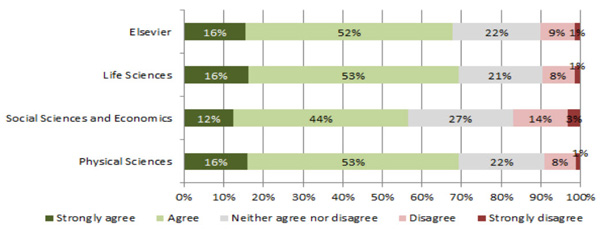I asked in Twittersphere what annoys them the most when it comes to submitting manuscripts to peer-reviewed academic journals. From the irritation of having to reformat references to fit some journal’s arbitrary style, to consigning figures and captions to the end of a submission, (as though it really was still 1988), to the pointlessness of cover letters* where all authors want to say is “Dear Editor, here is our paper” but feel the need to throw in something about how amazing their results are. The tweet proved a lot more popular than I expected and for a good two days you could see a steam of delicious rage rising from my timeline.
I had an ulterior motive in seeking out this information from your good selves. As most of you will know, one of my aims is to help improve the transparency and reproducibility of published research, and one of the journals I edit for is working through its (future) adoption of the newTransparency and Openness Promotion (TOP) guidelines. The TOP guidelines are a self-certification scheme in which journals voluntarily report their level of policy compliance with a series of transparency standards, such as data sharing, pre-registration, and so forth. TOP is currently endorsed by over 500 journals and promises to make the degree of transparency adopted by journals itself more transparent. I guess you could call this “meta-transparency”.
Now, in putting together our TOP policy at this journal at which I serve, we realised that it involves the addition of some new submission bureaucracy for authors. There will be a page of TOP guidelines to read beforehand and a 5-minute checklist to complete when actually submitting. We realise extra forms and guidelines are annoying for authors, so at the same time as introducing TOP we are going to strive to cut as much of the other (far less important) shit as possible.
- Abolish trivial house style requirements, including stipulations on figure dimensions & image file types, especially for the initial submission, as well as arbitrary house referencing and in-text citations styles. This is by far the most popular response. (score 112)
- Allow in-text figures and tables according to their natural position until the very final stage of submission. (score 61)
- Abolish all unnecessary duplication of information about the manuscript (e.g. word count, keywords), main author details and (most especially) co-author contact details that is otherwise mentioned on the title page or could be calculated automatically; abolish any requirement to include postal addresses of co-authors at least until the final stage (affiliation and email address should be sufficient, and should be readable from title page without requiring additional form completion); eliminate fax numbers altogether because, seriously, WTF are those fossils doing there anyway. (score 50)
- Abolish requirement for submissions to be in MS Word format only. (score 36)
- Abolish endnotes and either replace with footnotes or cut both. (score 33)
- Allow submission of LaTeX files. (score 29)
- Allow submission of single integrated PDF until the final stage of acceptance. (score 27)
- Abolish cover letters for initial submissions. (score 21)
- Abolish the Highlights section altogether because
* Highlights are Stupid* Everyone knows Highlights are Stupid* I can’t think of anything else to say here, so I’ll just repeat the conclusion that Highlights are Stupid (score 18)
- Remove maximum limits on the number of cited references. (score 7)
- Abolish the requirement for authors to recommend reviewers. (score 7)
- Increase speed of user interface. (score 6)
Not all of these apply to our journal, but we’ll try and improve on the things that do, and which we can change.







Leave a Reply